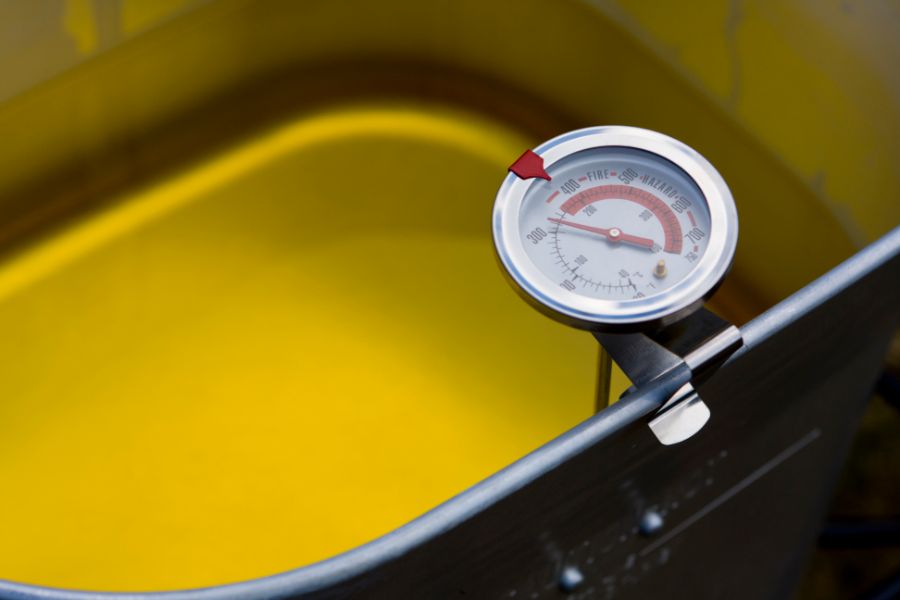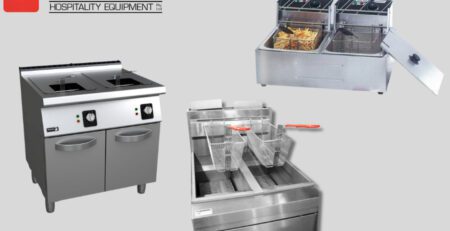Changing Oil in Commercial Deep Fryers Made Easy
Do you enjoy the crispiness of perfectly fried foods? The secret to achieving that delectable crunch lies in the maintenance of your commercial deep fryer. Learning how to change oil in a commercial deep fryer is a fundamental skill that ensures your fried dishes consistently tantalize your taste buds. In this guide, we will demystify the process, providing you with clear steps to master the art of oil change in your deep fryer.
Deep fryers are the backbone of crispy delicacies, but they require care to function at their best. To maintain the quality of your fried foods, understanding the proper way to change the oil is paramount. Let’s dive into the step-by-step process of oil change in a commercial deep fryer, making sure your culinary creations retain their deliciousness and crunch.
Preparing for a Smooth Oil Change


Before you dive into the oil-changing process, it’s crucial to gather your tools and prepare the fryer. These steps might seem small, but they lay the foundation for a successful oil change process.
Gather Your Materials:
- Get your high-temperature gloves, safety goggles, and a container for used oil.
- Don’t forget your cleaning supplies – sponges, scrub brushes, soap, and water.
- Have your new frying oil, a slotted spoon, a mesh skimmer, and an oil thermometer ready.
Safety First:
- Always turn off and unplug the deep fryer. Safety should always be a priority.
- Give the oil time to cool down. Hot oil can cause serious burns.
Drain the Old Oil:
- Put the disposal container under the fryer’s oil drain valve.
- Open the valve and let the oil flow out. Keep the slotted spoon or skimmer handy to catch any food bits.
Filter the Oil:
- Strain the used oil through a fine mesh sieve or commercial oil filter to remove any leftover food particles.
- This step helps your new oil last longer and keeps your fried food tasting top-notch.
Clean the Fryer Interior:
- Wipe the fryer’s interior with paper towels to remove any oil residue.
- Wash the fryer using warm, soapy water, making sure to scrub away stubborn grease.
- Thoroughly rinse the fryer to remove any traces of soap.
Inspect and Replace Fryer Baskets:
- Inspect the fryer baskets for any signs of wear and tear. Replace them if needed for safety and even frying.
By setting the stage with proper preparation, you’re ensuring that your transition to fresh oil will be seamless, ultimately benefiting both your fryer’s performance and the deliciousness of your fried foods.
Introducing Fresh Oil and Final Touches


With your fryer clean and prepped, it’s time to introduce fresh oil and make those final adjustments before your fryer is ready to work its magic.
1. Add New Oil:
- Refer to your fryer’s manual for the right oil amount.
- Pour the new oil into the fryer, leaving room for expansion as it heats.
2. Set the Temperature:
- Use the fryer’s temperature controls to set the frying temperature, typically between 350°F and 375°F (175°C to 190°C).
- Wait for the oil to reach the set temperature before adding food. A thermometer ensures accuracy.
3. Fry and Monitor:
- Cautiously place the food in the hot oil using a slotted spoon or basket.
- Don’t overcrowd the fryer; even cooking is key.
- Keep an eye on the frying process, adjusting the temperature as needed for consistent results.
4. Properly Store Oil:
- Once cooled, cover the fryer to prevent condensation.
- Store the oil in a cool, dark place to keep it fresh for longer.
5. Regular Maintenance:
- Set a schedule for oil changes, especially in busy kitchens. Commercial deep fryers might need oil changes every two days.
Conclusion
Mastering the art of changing oil in a commercial deep fryer is a game-changer for anyone who loves indulging in fried goodness. By following the provided steps, you can guarantee your fried dishes maintain their scrumptiousness and crispiness every time. Whether you’re a kitchen enthusiast or a professional chef, understanding the ins and outs of deep fryer maintenance is vital. So, for the finest deep fryers NZ has to offer, remember that proper oil change practices are the key to unlocking culinary excellence.








Leave a Reply